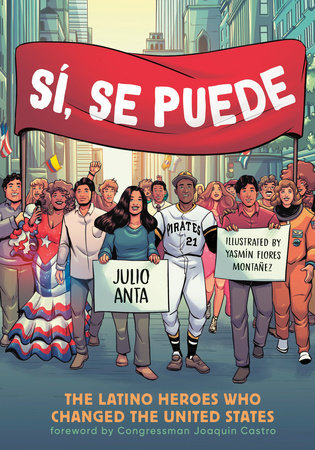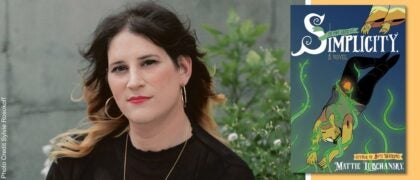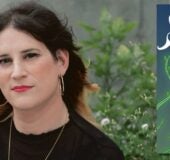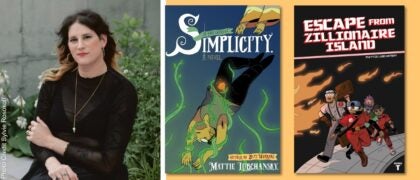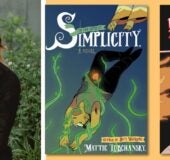Meet the unsung Latino rebels, artists, and activists who changed the United States—from Dolores Huerta to Desi Arnaz to Lin Manuel Miranda—in this bold and entertaining graphic history.
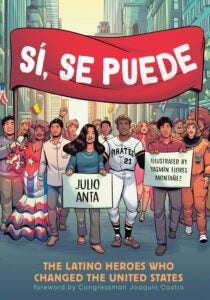 Writer Julio Anta and artist Yasmín Flores Montañez talk collaboration, the importance of Latin American history, and more in this interview about their upcoming graphic novel Sí, Se Puede: The Latino Heroes Who Changed the United States, releasing October 10th, 2023!
Writer Julio Anta and artist Yasmín Flores Montañez talk collaboration, the importance of Latin American history, and more in this interview about their upcoming graphic novel Sí, Se Puede: The Latino Heroes Who Changed the United States, releasing October 10th, 2023!
What inspired you to want to tell these stories?
Julio Anta : Despite growing up as a Cuban and Colombian American, in a city (Miami) that is over 70% Latino, I never once learned about Latino figures who influenced U.S. history in school. In fact, I learned quite the opposite. Whether it was through films and TV, or bad faith political rhetoric, I was taught to be grateful we were allowed to participate in American society; that we needed to earn our place here.
As I grew older, I began to learn about activists like Cesar Chavez and Dolores Huerta, leaders who fought for the dignity of farm workers in the face of physical violence. I learned about The Young Lords who used direct action to make their voices heard in a city that treated Puerto Rican immigrants like second-class citizens. I became inspired by these stories, and then angry to have never learned about them in school. It took me down a rabbit hole to discover more of these Latino heroes–some well known like Desi Arnaz, others, like the Hispanic Union soldiers of the U.S. Civil War, buried in history.
So, as with every other book I’ve written, I wrote Sí, Se Puede because it’s a book I wish I could pick up at a library and read. It’s a book about who we are, where we came from, and just a small sampling of the amazing contributions we’ve already made to this country.
Yasmín Flores Montañez: I always want to be able to illustrate stories that create an impact on the reader, so when Julio pitched me the idea I knew I wanted to be a part of this team.
Julio, how did you choose what historical events and people to include?
JA: One of the main points I wanted to make with this book is that Latinos are not just new arrivals, we’ve been part of the fabric of the United States since the very beginning! And, we’ve contributed much more than just music and food–though those are important aspects we talk discuss as well. I wanted readers to know that Latinos played crucial roles in climate science and environmental policy; we’re astronauts and politicians, grassroots and national activists, and more! That central thesis informed every historical events and people covered in the book.
Yasmin, what was the most difficult part of capturing the likenesses of these historical figures in your style?
YFM: The most challenging part always comes down to how much time you have to draw. I had to do quick studies of each historical figure and would have liked to have more time to do more. I feel every artist would tell you they always need more time.
What was the best part of collaborating with each other on the book?
JA: Prior to beginning work on Sí, Se Puede, I was simply an admirer of Yasmín’s work. Now, after two years of working on this book together, I count her as a friend! It doesn’t get better than that.
YFM: Creating a graphic novel is a team effort, it is not just one person who does it. It was easy for me to collaborate with Julio because he treated me as a collaborator instead of as someone who was executing his vision. In other words, I had the freedom to put my own voice in this book. There was always communication and that’s the best thing you can ask for in a team. I’m happy that at the end of this creative journey together we have become friends.
What was the most surprising event or person you learned about in the process of making this book?
JA: The Hispanic Union solders of the Civil War really caught me by surprise. The United States is a country that elevates the military and military service to great heights, so I knew from the beginning that I wanted to devote space to Latinos who served in the military. As I began doing research, I kept finding that the most exciting stories took place during the Civil War. It was a time before the airplane, and most of the military weapons synonymous with war today, so soldiers and their leaders resorted to much more creative forms of warfare. Strategies like using hot air balloons to map your enemies location, or digging tunnels across enemy lines and lighting up explosions underneath the earth. These were actions either conceived of, or executed by Latino soldiers in a time when they themselves were not viewed as fully “American.”
YFM: I knew about César Chavez but embarrassingly enough not so much about Dolores Huerta. I feel that we always mentioned the men in the stories throughout history and not so much the women. I didn’t know that much about Dolores until making Sí Se Puede. I am of course blown away by who this woman is and how much she accomplished by not giving up, fighting for what she believed was fair, and to this day supporting human rights.
What story or person talked about in the book inspires you the most?
JA: It would have to be Roberto Clemente. This is a man who was determined and singularly focused on the goal of playing baseball at the highest level. But he’s also a man who was Afro-Latino and living as a colonial subject of the United States in Puerto Rico. The odds were stacked against him.
When he finally achieved his dreams and made it to the United States, he now had to contend with the racial segregation of the civil rights era that didn’t allow him to eat in restaurants or stay in the same hotels as his white teammates. No one would’ve blamed Roberto for keeping his head down and just focusing on playing baseball, but instead he fought back. He fought with the team management for better accommodations for himself and the other Black players, fought with the press who wrote about him in cruel and often racist ways. And even after winning the World Series and breaking individual records, he never forgot his roots. He lead humanitarian efforts back home in Puerto Rico and throughout Latin America. He died attempting to bringing aid to an earthquake ravaged Nicaragua and is universally recognized as the most humanitarian player to ever take the field.
YFM: I was born and raised in Puerto Rico and one of the most special chapters in the book is the one of Roberto Clemente. There’s a song from an artist back home that goes by the name Residente that says, “Pero aquí todos llevamos en la espalda el número veintiuno”, and he is right in Puerto Rico everyone remembers and admires Roberto. I knew his story since I was a little girl but reading it in more detail made me admire this man even more. He was a fighter, a hard worker, and truly an inspiration to anyone. For me, working hard and not giving up while also showing kindness is the strongest attribute an individual can have and is how I try to live my life.
What message do you hope that people will take away from learning about these prominent Latino figures?
JA: The first chapter of this book discusses the machine of U.S. imperialism in Latin America–whether it takes the form of direct military or economic intervention, or supporting of the regions deadliest dictators and war criminals, the United States is the destabilizing force that ultimately leads to most of the Latino migration we see in this country. We then spend the rest of the book talking about the amazing accomplishments Latinx people have made despite the history of their home countries, and the racism and discrimination they experience in their new home. But the most important message I want readers to take away with is that every single Latino in this country contributes to this ongoing struggle and is a hero in their own right. Whether that’s by raising their families with dignity or protesting in the streets.
YFM: To be inspired, be proud of your roots, and who you are.
How do you think we can encourage more Latino stories in comics?
JA: I believe non-fiction books like Sí, Se Puede that make a case for our history are important, but equally as important are light and fun stories written by and starring Latinx characters. We need more of that. Every story doesn’t need to be about our trauma or pain. Sí, Se Puede doesn’t shy away from the difficult aspects of our history, but it’s ultimately a book about hope. As long as future authors and artists know that, and see examples of positive stories embraced and supported by publishers, the sky’s the limit for Latino comics!
YFM: The key to seeing more stories about Latinos in comics is by supporting books like Sí Se Puede that bring the culturally diverse world that is Latin America.






